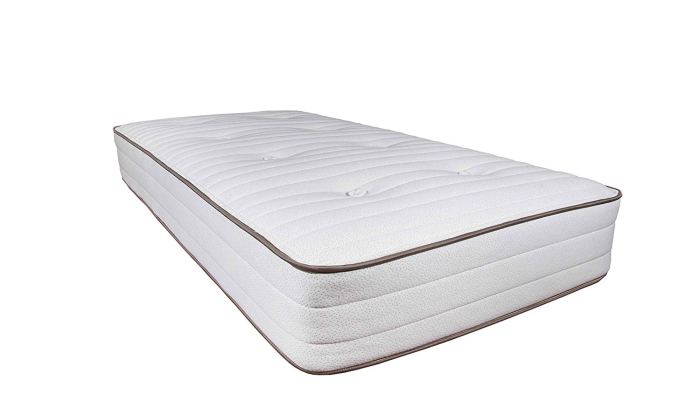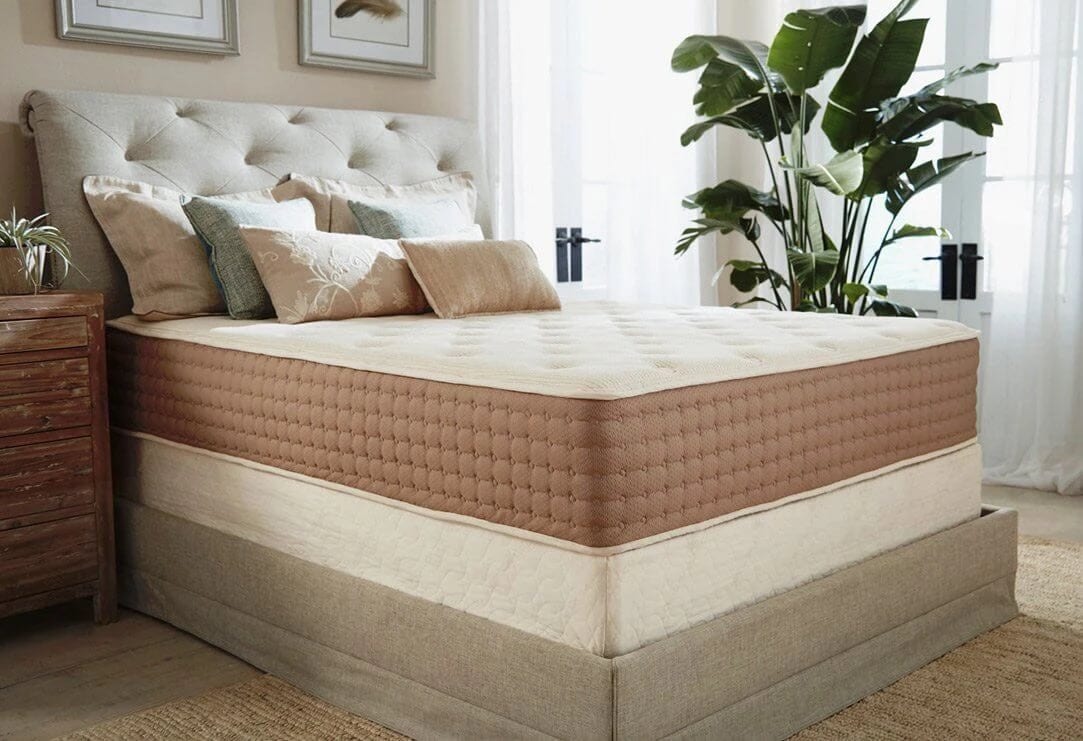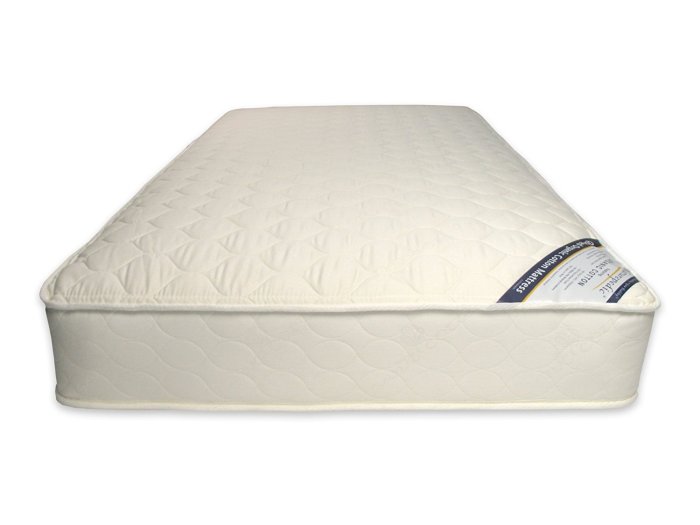In the realm of sleep, comfort and health intertwine seamlessly. Enter the world of Organic Non Toxic Mattresses, where slumber becomes a sanctuary for both body and mind. These mattresses are meticulously crafted with nature’s finest materials, promising a restful night’s sleep and a renewed sense of well-being.
Organic Non Toxic Mattresses are more than just a place to lay your head; they are an investment in your health and happiness. Join us as we delve into the world of these extraordinary mattresses, exploring their benefits, types, and how to choose the perfect one for your needs.
Benefits of Organic Non-Toxic Mattresses
Swapping your conventional mattress for an organic non-toxic one offers a myriad of health benefits, contributing to a restful night’s sleep and overall well-being. These mattresses are crafted from natural, non-toxic materials that eliminate exposure to harmful chemicals and promote a healthier sleep environment.
Organic non-toxic mattresses are hypoallergenic, reducing the risk of allergies and respiratory issues. They are also free from flame retardants, which have been linked to various health concerns. Additionally, the natural materials used in these mattresses regulate body temperature, ensuring a comfortable sleep temperature throughout the night.
Improved Sleep Quality, Organic Non Toxic Mattress
- Studies have shown that sleeping on an organic non-toxic mattress can significantly improve sleep quality, reducing sleep disturbances and increasing the duration of deep sleep.
- The absence of toxic chemicals and allergens creates a restful environment, allowing for a more peaceful and rejuvenating sleep.
Reduced Health Risks
- Organic non-toxic mattresses eliminate exposure to harmful chemicals, such as formaldehyde and phthalates, which have been linked to cancer, reproductive issues, and developmental problems.
- They also reduce the risk of skin irritation, respiratory problems, and other health issues associated with exposure to toxic chemicals.
Examples of Organic Materials
- Natural latex:Derived from rubber trees, natural latex is hypoallergenic, antimicrobial, and provides excellent support and pressure relief.
- Organic cotton:Grown without the use of pesticides or herbicides, organic cotton is soft, breathable, and moisture-wicking.
- Wool:Wool is a natural insulator that regulates body temperature, wicks away moisture, and is resistant to dust mites.
Types of Organic Non-Toxic Mattresses

Organic non-toxic mattresses are available in various types, each offering unique features and benefits. Understanding the differences between these types is crucial for selecting the most suitable mattress for your needs and preferences.
Latex Mattresses
Latex mattresses are crafted from natural or synthetic rubber, providing excellent support and pressure relief. Natural latex mattresses are derived from the sap of rubber trees and offer superior durability, hypoallergenic properties, and resistance to dust mites.
Memory Foam Mattresses
Memory foam mattresses conform to the body’s shape, offering excellent pressure relief and motion isolation. However, traditional memory foam can retain heat, leading to discomfort during warm nights. Newer, plant-based memory foam options address this issue, providing a cooler sleeping experience.
Innerspring Mattresses
Innerspring mattresses consist of a network of interconnected coils, providing support and breathability. Organic innerspring mattresses utilize coils made from recycled steel, ensuring durability and eco-friendliness. These mattresses offer a more traditional feel, with varying levels of firmness available.
How to Choose the Right Organic Non-Toxic Mattress
When selecting an organic non-toxic mattress, consider factors such as firmness, size, and materials. Firmness determines comfort and support, with softer mattresses conforming to body curves and firmer ones providing more back support. Size should accommodate your height and weight, ensuring ample sleeping space.
Materials play a crucial role in mattress quality and durability. Look for organic materials like cotton, wool, and latex, which are breathable, hypoallergenic, and eco-friendly.
Testing Mattresses
Before purchasing, test different mattresses to find the best fit. Lie down in various positions, including on your back, side, and stomach. Pay attention to comfort, support, and pressure point relief. Bring a pillow for an accurate assessment of comfort.
Finding the Perfect Fit
Consider your sleep habits, body type, and any health concerns. Side sleepers may prefer softer mattresses, while back sleepers often opt for firmer ones. Stomach sleepers typically require medium-firm mattresses. If you share a bed, consider a mattress that accommodates both sleepers’ needs.
Care and Maintenance of Organic Non-Toxic Mattresses
Organic non-toxic mattresses require proper care and maintenance to ensure their longevity and hygiene. Regular cleaning, stain removal, and other maintenance tasks help preserve the mattress’s quality and provide a healthier sleep environment.
Here are some essential care and maintenance tips for organic non-toxic mattresses:
Cleaning Methods
- Vacuuming:Regularly vacuum the mattress surface to remove dust, dirt, and other debris. Use a vacuum cleaner with a soft brush attachment to avoid damaging the mattress fabric.
- Spot Cleaning:For small spills or stains, use a damp cloth or sponge with a mild, eco-friendly cleaning solution. Blot the stain gently to avoid spreading it. Avoid using harsh chemicals or abrasive cleaners.
- Full Cleaning:For a thorough cleaning, use a mattress cleaner specifically designed for organic mattresses. Follow the manufacturer’s instructions carefully to avoid damaging the mattress.
Stain Removal Techniques
- Blood Stains:Mix equal parts hydrogen peroxide and water. Apply to the stain and blot gently. Rinse with cold water.
- Urine Stains:Mix equal parts white vinegar and water. Apply to the stain and let it sit for a few minutes. Blot and rinse with cold water.
- Sweat Stains:Mix 1 tablespoon of baking soda with 2 cups of water. Apply to the stain and let it sit for a few hours. Vacuum the residue.
Recommended Frequency of Maintenance
The frequency of mattress maintenance depends on usage and environmental factors. As a general guideline:
- Vacuum the mattress monthly.
- Spot clean as needed.
- Do a full cleaning every 6-12 months.
Care Recommendations for Different Mattress Types
| Mattress Type | Specific Care Instructions |
|---|---|
| Latex | Use a mattress cover to protect from dust and moisture. Vacuum regularly. Spot clean with a damp cloth and mild soap solution. |
| Memory Foam | Avoid vacuuming directly on the memory foam. Use a soft brush attachment to remove dust. Spot clean with a damp cloth and mild soap solution. |
| Innerspring | Vacuum regularly. Rotate the mattress every 3-6 months to prevent sagging. Spot clean with a damp cloth and mild soap solution. |
| Hybrid | Follow care instructions for both latex and innerspring mattresses. Vacuum regularly and spot clean as needed. |
Environmental Impact of Organic Non-Toxic Mattresses

Choosing an organic non-toxic mattress has significant environmental benefits. These mattresses are made from sustainable materials, reducing carbon footprint and chemical emissions during production and disposal.
Organic mattresses are made from natural and renewable materials like cotton, wool, and latex, which have a lower environmental impact than synthetic materials. They are also free from harmful chemicals like flame retardants and pesticides, which can pollute the environment and harm human health.
Certifications and Standards
To ensure the environmental integrity of organic non-toxic mattresses, several certifications and standards have been established:
- Global Organic Textile Standard (GOTS): Certifies mattresses made from at least 70% organic fibers and free from harmful chemicals.
- Organic Content Standard (OCS): Verifies the organic content of mattresses, ensuring they meet specific organic fiber percentages.
- Forest Stewardship Council (FSC): Guarantees that wood used in mattress frames is sourced from sustainably managed forests.
Final Thoughts

As we bid farewell to the topic of Organic Non Toxic Mattresses, let us carry with us the knowledge that a good night’s sleep is not just a luxury but a necessity for a healthy and fulfilling life. By embracing the benefits of these mattresses, we can create a sanctuary in our bedrooms, where rest and rejuvenation reign supreme.
Remember, investing in an Organic Non Toxic Mattress is not just about comfort; it’s about prioritizing your well-being and unlocking the transformative power of a truly restful night’s sleep.
Q&A: Organic Non Toxic Mattress
Are Organic Non Toxic Mattresses more expensive than traditional mattresses?
While Organic Non Toxic Mattresses may have a higher initial cost, they offer long-term savings due to their durability and health benefits. Reduced healthcare expenses and improved sleep quality can offset the price difference over time.
How often should I replace my Organic Non Toxic Mattress?
The lifespan of an Organic Non Toxic Mattress typically ranges from 8 to 10 years, depending on the materials and usage. Regular maintenance and care can extend its longevity.
Are Organic Non Toxic Mattresses suitable for people with allergies?
Yes, Organic Non Toxic Mattresses are an excellent choice for individuals with allergies. They are made without harmful chemicals or allergens, creating a hypoallergenic sleeping environment.





Leave a Comment